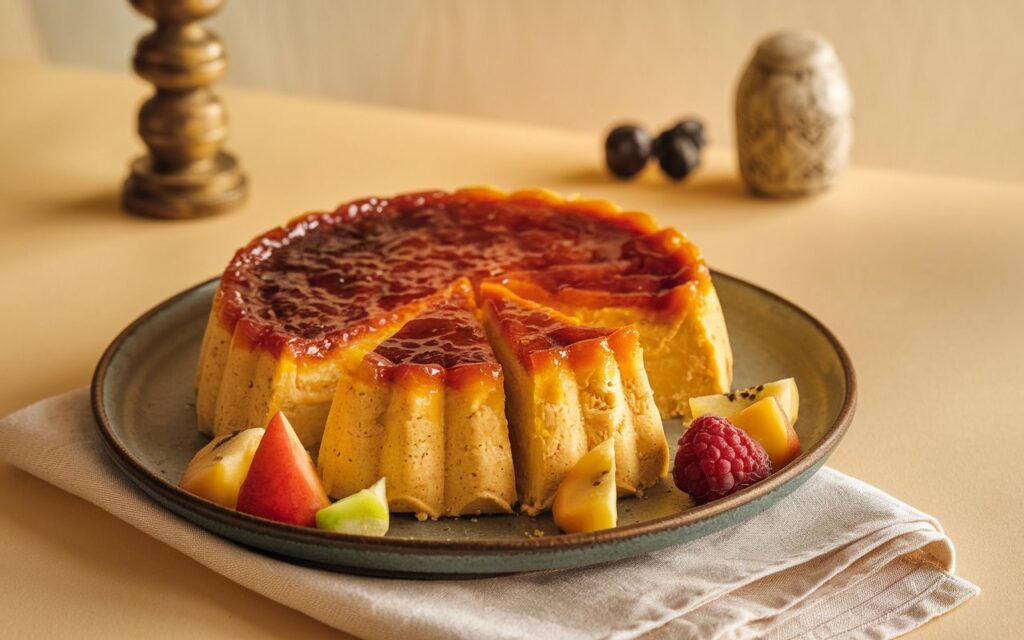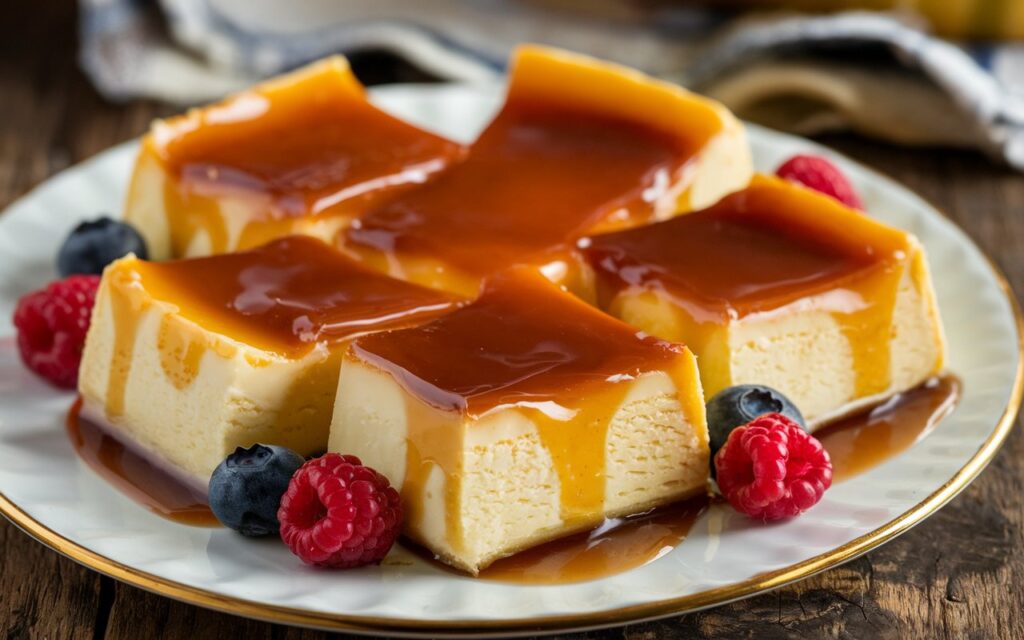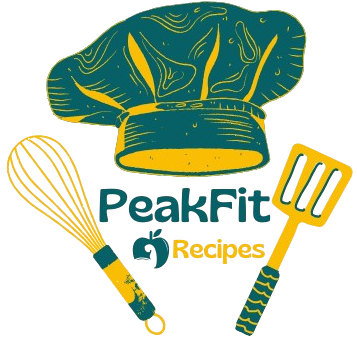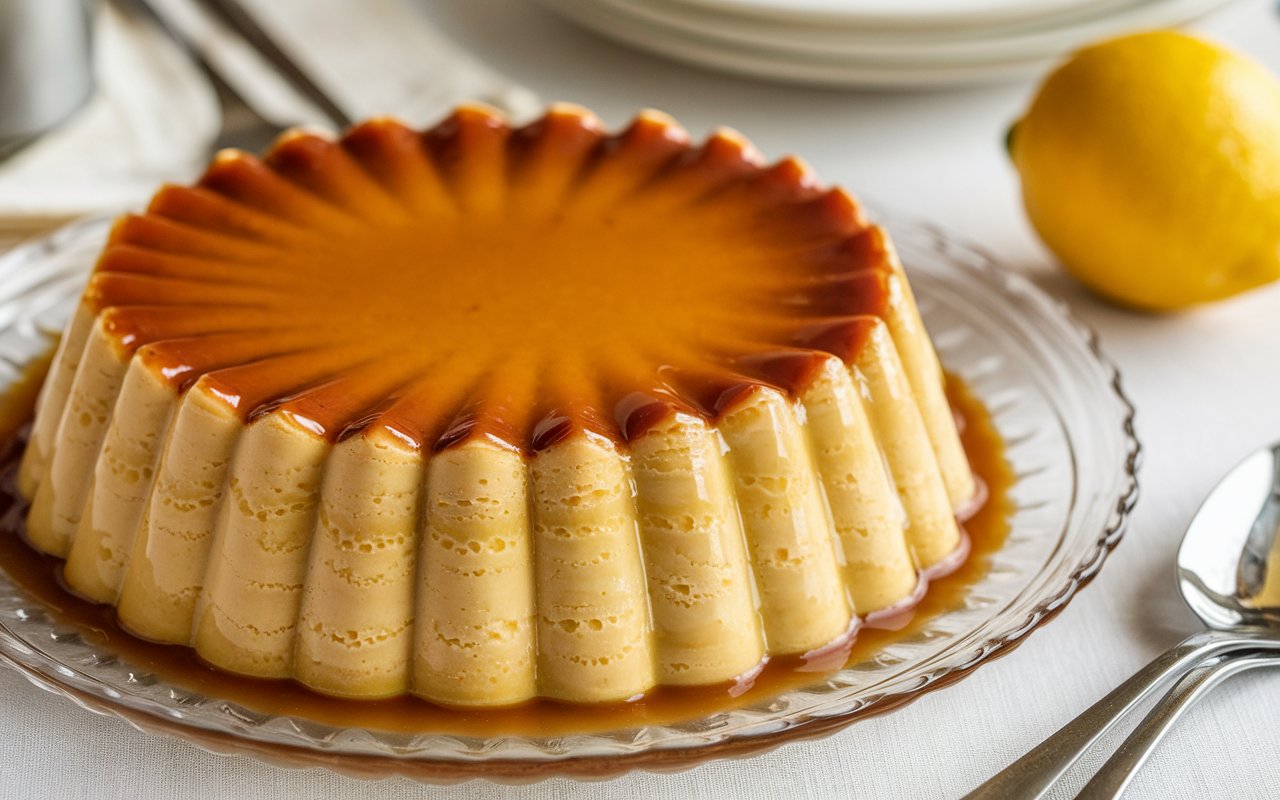If you’ve ever craved a sweet, creamy, and rich dessert, quesillo venezolano is the perfect treat to satisfy your taste buds. ThiIf you’ve ever craved a sweet, creamy, and rich dessert, quesillo venezolano is the perfect treat to satisfy your taste buds. This Venezuelan flan-like dessert is known for its smooth texture and caramel flavor. It’s a beloved dish in Venezuela and beyond. In this article, we’ll explore everything you need to know about quesillo venezolano—its history, ingredients, preparation, and the secrets to making it perfectly.
Whether you’re a seasoned chef or a home cook, this step-by-step guide will help you make quesillo venezolano with ease. By the end of this article, you’ll be able to create this mouthwatering dessert that will impress your family and friends.
We’ll also provide external resources to further enhance your cooking skills. For example, check out this guide to Venezuelan cooking techniques to understand the traditional methods used in authentic Venezuelan dishes.
What is Quesillo Venezolano?
Quesillo venezolano is a type of flan or caramel custard made from eggs, condensed milk, and evaporated milk. It is often compared to leche flan, but the texture and flavor differ. While both desserts share a creamy texture, quesillo venezolano is denser and richer.
This Venezuelan dessert is known for its smooth, creamy consistency and the caramel sauce that forms naturally as it bakes. Traditionally, people serve quesillo venezolano chilled. It’s especially popular during holidays and family gatherings.
To learn more about the history of quesillo venezolano and other Venezuelan sweets, visit this article on Venezuelan desserts.
Ingredients for Quesillo Venezolano
Making the perfect quesillo venezolano requires just a few simple ingredients. Here’s what you’ll need:
- 4 large eggs: These create the custard’s smooth texture.
- 1 can of sweetened condensed milk: It adds sweetness and creaminess to the flan.
- 1 can of evaporated milk: It lightens the custard and gives it a silky texture.
- 1 tsp vanilla extract: It enhances the overall flavor of the dessert.
- 1 cup sugar: This makes the caramel sauce that coats the bottom of the baking dish.
- Pinch of salt: It balances the sweetness and enhances the flavor.
How to Make Quesillo Venezolano
Step 1: Prepare the Caramel
Start by making the caramel. Heat sugar in a small saucepan over medium heat. Stir constantly to melt the sugar evenly. As it melts, it will turn golden brown. When it reaches a deep amber color, pour the caramel into a round baking dish or flan mold. Swirl the dish to coat the bottom with caramel. Be careful, as the caramel will be very hot.
Step 2: Mix the Custard
In a mixing bowl, beat the eggs until fully combined. Add the sweetened condensed milk, evaporated milk, vanilla extract, and a pinch of salt. Stir until the custard is smooth and well combined.
Step 3: Bake the Quesillo
Preheat your oven to 350°F (175°C). Pour the custard mixture into the prepared baking dish over the caramel. Place the dish in a larger pan filled with about an inch of hot water to create a water bath (baño maría). This will help the quesillo bake evenly.
Bake the quesillo for about 60 to 70 minutes, or until the center is slightly jiggly. Check for doneness by inserting a toothpick into the center. If it comes out clean, your quesillo is ready.
Step 4: Cool and Serve
Once the quesillo is baked, remove it from the oven. Let it cool to room temperature, then refrigerate it for at least 4 hours. It’s best to refrigerate it overnight.
When you’re ready to serve, run a knife around the edges to loosen the quesillo. Invert it onto a serving plate to reveal the glossy caramel topping. Slice and enjoy!
Tips for the Perfect Quesillo Venezolano
Making quesillo venezolano is easier than it seems, but these tips will help ensure that it turns out perfectly every time:
- Be patient with the caramel: Heat the sugar slowly. If it burns, start over, as burnt caramel can ruin the flavor.
- Use room temperature ingredients: Let your eggs and milk come to room temperature before mixing. This helps the custard set more evenly.
- Check for doneness with a toothpick: The quesillo should be firm but still jiggle slightly in the center. If the center is runny, bake for a little longer.
- Serve chilled: Quesillo venezolano tastes best when it’s served chilled.

What is Quesillo Venezolano?
Quesillo venezolano is a type of flan or caramel custard made primarily from eggs, condensed milk, and evaporated milk. It is often compared to a leche flan, but there are distinct differences in texture and flavor. While both desserts share a creamy texture, the key difference lies in the ingredients and cooking methods.
This Venezuelan dessert is known for its rich, smooth consistency and the decadent caramel sauce that forms naturally as it bakes. Traditionally, quesillo venezolano is served chilled and can be enjoyed at any time, but it’s especially popular during holidays and family gatherings.
To further understand the history and variations of quesillo venezolano, we recommend checking out this article on Venezuelan sweets, which covers the evolution of the dish throughout the years.
Ingredients for Quesillo Venezolano
Making the perfect quesillo venezolano requires just a few simple ingredients, which together create a rich and flavorful dessert. Here’s a list of what you’ll need:
- 4 large eggs: The base of the custard, giving it its smooth, velvety texture.
- 1 can of sweetened condensed milk: Adds sweetness and creaminess to the flan.
- 1 can of evaporated milk: Lightens the custard and gives it a silky texture.
- 1 tsp vanilla extract: Enhances the overall flavor of the dessert.
- 1 cup sugar: Used to make the caramel sauce that coats the bottom of the baking dish.
- Pinch of salt: Balances the sweetness and enhances the flavor.
How to Make Quesillo Venezolano
Step 1: Prepare the Caramel
Start by making the caramel for the quesillo venezolano. In a small saucepan, heat the sugar over medium heat. Stir constantly to ensure the sugar melts evenly. As it begins to melt, the sugar will turn golden brown. Once it reaches a deep amber color, carefully pour it into a round baking dish or flan mold, swirling the dish to coat the bottom evenly with caramel. Be careful, as the caramel will be extremely hot.
Step 2: Mix the Custard
In a separate mixing bowl, beat the eggs until fully combined. Then, add the sweetened condensed milk, evaporated milk, vanilla extract, and a pinch of salt. Mix until the custard is smooth and well-combined. This is the base for the creamy filling of your quesillo venezolano.
Step 3: Bake the Quesillo
Preheat your oven to 350°F (175°C). Pour the custard mixture over the caramel in the prepared baking dish. Place the dish in a larger pan filled with about an inch of hot water to create a water bath (baño maría). This will help the quesillo bake evenly and prevent it from cracking.
Bake the quesillo for about 60 to 70 minutes, or until it’s set but still slightly jiggly in the center. You can check for doneness by inserting a toothpick into the center—if it comes out clean, the quesillo is ready.
Step 4: Cool and Serve
Once the quesillo is baked, remove it from the oven and let it cool to room temperature. Then, refrigerate it for at least 4 hours, preferably overnight. This will allow the flavors to meld and the quesillo to fully set.
When ready to serve, run a knife around the edges of the quesillo to loosen it from the sides of the dish. Invert the mold onto a serving plate to reveal the glossy caramel topping. Slice and enjoy!

1. History of Quesillo Venezolano
Understanding the history of quesillo venezolano adds depth to your appreciation of this dessert. This traditional Venezuelan treat has been passed down through generations, often prepared during family celebrations and holidays. The dessert is said to have been influenced by European flans, particularly the Spanish flan de huevo.
However, over the centuries, Venezuelan chefs adapted it, adding their unique ingredients, such as sweetened condensed milk, which helped create the rich texture we associate with quesillo today.
By understanding its cultural background, you’ll gain a deeper respect for this delicious dessert and its place in Venezuelan cuisine.
2. Why Quesillo Venezolano is a Popular Venezuelan Dessert
Quesillo venezolano is more than just a dessert—it’s a part of Venezuelan culture. It is commonly served at special events like Christmas, birthdays, and family gatherings. The simplicity and accessibility of the ingredients make it a favorite in every household, from the most humble kitchens to high-end restaurants.
In addition, its rich flavor and smooth texture make it universally loved. Whether you’re a fan of caramel or custards, quesillo venezolano hits all the right notes. The creamy custard paired with caramel is a combination that is hard to resist.
3. Common Variations of Quesillo Venezolano
While the traditional recipe remains a classic, many variations of quesillo venezolano exist. Some people add flavors like cocoa powder, cinnamon, or coconut to give it a unique twist. Other variations might involve adding cream cheese to create a denser, more decadent version.
You might also find regional variations across Venezuela. For example, some areas prefer their quesillo with a more pronounced vanilla flavor, while others may opt for a heavier caramel base. Regardless of the variation, the base ingredients typically remain the same.
4. How to Store Quesillo Venezolano
Once you’ve made your quesillo venezolano, it’s important to store it properly to maintain its texture and flavor. Here are some tips:
- Refrigeration: Quesillo venezolano should be stored in the fridge, especially if you plan to eat it within a few days.
- Covering: Always cover the quesillo with plastic wrap or an airtight container to prevent it from absorbing other odors in the refrigerator.
- Freezing: While it’s best enjoyed fresh, you can freeze quesillo venezolano for up to two months. To thaw, simply leave it in the fridge overnight.
Storing quesillo properly ensures that it retains its smooth and creamy texture when you’re ready to serve it.
5. Healthier Alternatives to Make Quesillo Venezolano
If you’re looking to make a lighter version of quesillo venezolano, there are a few alternatives you can try. Here are some healthier substitutions:
- Low-fat milk: Swap out the evaporated milk for low-fat milk or even almond milk for a lighter version.
- Stevia or honey: Instead of sugar or sweetened condensed milk, try using natural sweeteners like stevia or honey.
- Egg substitutes: You can use egg replacers like flax seeds or chia seeds to lower the cholesterol content. However, this may change the texture slightly.
These substitutions will alter the flavor and texture, but they provide a way to enjoy quesillo while being mindful of your dietary needs.
6. Pairing Quesillo Venezolano with Drinks
Pairing quesillo venezolano with the right beverage can elevate your dessert experience. Here are a few suggestions:
- Coffee: A cup of strong coffee, such as espresso or black coffee, pairs wonderfully with the sweet and creamy quesillo.
- Venezuelan hot chocolate: For a truly authentic Venezuelan experience, enjoy your quesillo with a rich, thick Venezuelan hot chocolate made from cocoa paste.
- Wine: A light, sweet dessert wine, like Moscato, complements the richness of quesillo without overpowering it.
- Iced tea: For a refreshing option, try pairing quesillo venezolano with a chilled, lightly sweetened iced tea.
These drinks will balance out the dessert’s sweetness and create a perfect end to your meal.
7. Quesillo Venezolano as a Gift
In Venezuela, it is common to gift homemade desserts, and quesillo venezolano makes for an excellent and heartfelt present. Whether it’s a birthday, a holiday, or just a gesture of goodwill, presenting someone with a beautifully made quesillo shows that you’ve put time and care into preparing something special.
To make it even more personalized, consider packaging your quesillo in a decorative jar or flan mold and adding a handwritten note. This thoughtful touch will make your gift stand out.
8. Troubleshooting Common Quesillo Venezolano Mistakes
Sometimes, things don’t go as planned in the kitchen. Here are some common issues people face when making quesillo venezolano and how to avoid them:
- The custard doesn’t set: If your quesillo doesn’t set properly, it might not have baked long enough. Be sure to check for doneness with a toothpick before removing it from the oven.
- Burnt caramel: If the caramel turns too dark or bitter, try lowering the heat when melting the sugar. Stir constantly to avoid burning.
- Too much air in the custard: If you’ve over-beaten the eggs, your quesillo might have bubbles or holes. Mix the custard gently to prevent this.
These troubleshooting tips will help you perfect your quesillo venezolano every time.
9. Cultural Significance of Quesillo Venezolano in Venezuela
In Venezuela, food is a significant part of the culture, and quesillo venezolano holds a special place. It’s often served during festive occasions, but its presence extends beyond holidays and celebrations. It’s a comfort food that evokes memories of home, family, and togetherness.
The dessert is not just a treat—it’s a symbol of Venezuelan hospitality. It’s common for families to prepare quesillo for guests as a way of showing warmth and generosity.
Tips for the Perfect Quesillo Venezolano
Making quesillo venezolano can seem like an intimidating task, but with these tips, you can ensure that your dessert turns out perfect every time:
- Be patient with the caramel: Take your time while melting the sugar. If it burns, start over, as burnt caramel can ruin the flavor.
- Use room temperature ingredients: Make sure your eggs and milk are at room temperature before mixing them. This will help the custard set more evenly.
- Check for doneness with a toothpick: The quesillo should be slightly firm but still jiggle when you tap the side of the dish. If the center is too runny, it needs more time to bake.
- Serve chilled: For the best texture and flavor, quesillo venezolano should be served chilled.

FAQs about Quesillo Venezolano
What is the difference between Quesillo and Leche Flan?
Both quesillo and leche flan are custard-like desserts, but the primary difference lies in their ingredients and texture. Quesillo venezolano is typically made with a mix of condensed milk, evaporated milk, and eggs, giving it a richer, creamier texture. On the other hand, leche flan is usually made with regular milk and eggs, creating a lighter, less dense custard.
What is quesillo made of?
Quesillo venezolano is made from four main ingredients: eggs, condensed milk, evaporated milk, and sugar. It also includes a pinch of salt and vanilla extract to enhance the flavor. The caramel is made by melting sugar until it turns golden brown and forms a delicious topping for the dessert.
Conclusion: Enjoying Quesillo Venezolano
Now that you’ve learned how to make quesillo venezolano, it’s time to get in the kitchen and start creating this delicious Venezuelan dessert. Whether you’re celebrating a special occasion or simply treating yourself, quesillo is sure to impress with its rich flavor and creamy texture. With this recipe, you can enjoy a taste of Venezuela in the comfort of your own home. Don’t forget to share your creations with loved ones—it’s a dessert that’s always best enjoyed together.
For more delicious dessert recipes and helpful cooking tips, explore our full recipe collection.

